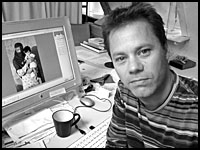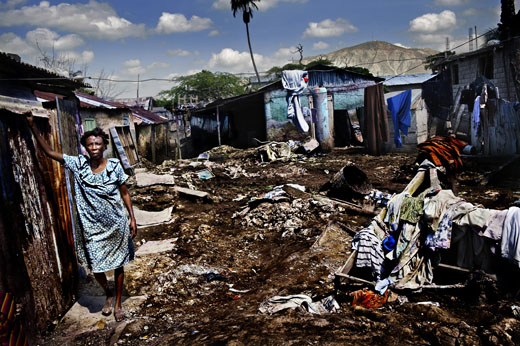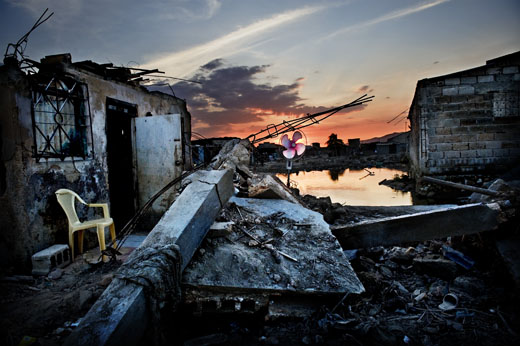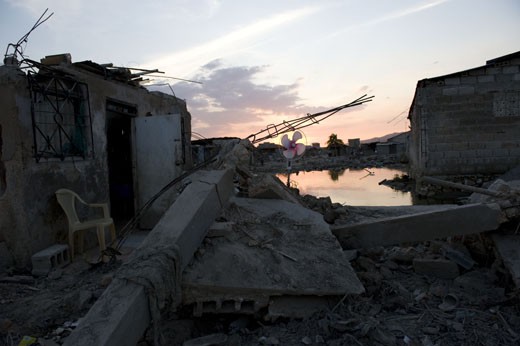This year’s Danish photo contest “Picture of The Year” is now getting quite an attention in photo communities worldwide. All because of the controversial RAW conversion with following colour, contrast and tonal enhancements made by one of the participants—photojournalist Klavs Bo Christensen.

Several years ago, the rules for the Danish “Picture of The Year” were updated: “Photos submitted to Picture of The Year must be a truthful representation of whatever happened in front of the camera during exposure. You may post-process the images electronically in accordance with good practice. That is cropping, burning, dodging, converting to black and white as well as normal exposure and color correction, which preserves the image’s original expression. The Judges and exhibition committee reserve the right to see the original raw image files, raw tape, negatives and/or slides. In cases of doubt, the photographer can be pulled out of competition”. (source)
Jens Tønnesen, the Webmaster for the Danish Union of Press Photographers, attended the National Press Photographers Association’s “NewsVideo Workshop” in Norman, where he told News Photographer magazine about the heated Photoshop debate that’s going on back in Copenhagen.
During the course of judging and selection, the judges saw some pictures that were enchanced in such a way, that they could not “be a truthful representation”. Some of the photos were therefore rejected on the spot, but for some of them they requested original RAW files—to see the difference.
“Photojournalist Klavs Bo Christensen just landed at Kastrup Airport after a long travel abroad, when his cell phone rang. It was a representative from the Danish photo contest Picture of The Year, who asked him to submit his RAW files from his Haiti story to the judges. (…) Klavs Bo Christensen has received his luggage at the airport and has rushed out to his office to find his RAW files, burn them on to a CD and deliver it to Gl. Strand in the center of Copenhagen, where the judging takes place.” (source)
But the requested files did not remove the judges’ suspicion of immoderate adjustments. Especially the three images (photographed using Nikon D700), that are shown throughout this article, invoked the judges’ anger.
Jens Tønnesen, the Webmaster for the Danish Union of Press Photographers, attended the National Press Photographers Association’s “NewsVideo Workshop” in Norman, where he told News Photographer magazine about the heated Photoshop debate that’s going on back in Copenhagen.
During the course of judging and selection, the judges saw some pictures that were enchanced in such a way, that they could not “be a truthful representation”. Some of the photos were therefore rejected on the spot, but for some of them they requested original RAW files—to see the difference.
“Photojournalist Klavs Bo Christensen just landed at Kastrup Airport after a long travel abroad, when his cell phone rang. It was a representative from the Danish photo contest Picture of The Year, who asked him to submit his RAW files from his Haiti story to the judges. (…) Klavs Bo Christensen has received his luggage at the airport and has rushed out to his office to find his RAW files, burn them on to a CD and deliver it to Gl. Strand in the center of Copenhagen, where the judging takes place.” (source)
But the requested files did not remove the judges’ suspicion of immoderate adjustments. Especially the three images (photographed using Nikon D700), that are shown throughout this article, invoked the judges’ anger.
As for the photo below, “he deliberately selected a chair and made it yellow, and so he selects the wall and makes it blue”—said Peter Dejong, the second judge—”For me it is unacceptable.”
The third judge, Carsten Ingemann suggested that they perhaps could give a prize to one of the images to open a discussion about how to use Photoshop, but that idea is rejected by the other two judges. But we see that the discussion is pretty heated now, anyway. :-)
After a short discussion the judges decided to vote out the whole Haiti series by Klavs Bo Christensen. “It should not mean that we do not accept or recognize editing in Photoshop, but this example is really extreme”, said Miriam Dalsgaard.

Klavs Bo Christensen believes there are significant differences in RAW files from the different cameras. He experienced it when he switched from Canon to Nikon and it is even clearer when he pulls out his Leica M8. “In my opinion, a RAW file … has nothing to do with reality and I do not think you can judge the finished images and the use of Photoshop by looking at the RAW file” (source), he said. Also, as he stated, “second, there are also huge differences between RAW conversion tools, and on how the files from different cameras are converted. And there are significant differences in the profile you choose to use in the conversion tool for each camera” (source).
The photojournalist also remarks that “”one can for example choose to overexpose his images, making them more saturated in color when you close them down in the RAW converter. It seems to me in line with choosing a specific film to each assignment in the old days. (…) You can also choose to expose after highlights and raise the bottom afterwards or you may choose to shoot in JPEG with the camera ready set to ‘High contrast’ or other fiddlings”
Klavs Bo Christensen is also questioning whether the judges are to judge the images on the basis of RAW files. “What is the task of the judges? Is it to look on our Photoshop or is it to value the photo journalistic content and angle of the story? Pellegrin for example, would not have had a chance in POY with his way of post processing”.” (source)
“Subsequently, he has also acknowledge that the images may have been given “full throttle” in Photoshop, but not more than it still is inside his limits for image processing. (…) However we will probably not see Klavs Bo Christensen’s color pictures submitted to next year’s Danish version of Picture of The Year, because he made a promise to himself only to participate with black and white pictures in the future.” (source)
A question: What do you think? Were the judge correct, which side, do you think, has more compelling arguments?
24. 04. 2009
Sources
- http://www.pressefotografforbundet.dk/index.php?id=11708 (click on VOTERINGEN)
- http://nppa.org/news_and_events/news/2009/04/denmark.html
- http://www.fotoco.dk/POY_2009/index.html
- http://www.lightstalkers.org/klavs
- http://www.klavs.dk




